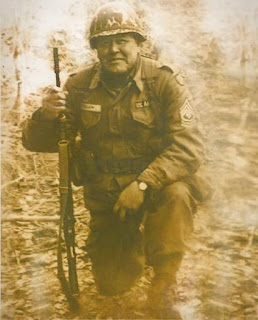A man begging for his wife’s forgiveness inside Divorce Court. Chicago, 1948.
A man begging for his wife’s forgiveness inside Divorce Court. Chicago, 1948.
This decades-old photo is worth more than 1,000 words.
The black-and-white image, which has made the rounds on social media and Reddit in recent years, features a suited man on his literal knees, begging for the forgiveness of his fur-clad, soon-to-be ex-wife outside a Chicago divorce court.
The looks on their faces seem to say it all: The scorned husband appears desperate, mouth slightly agape as he looks up at his one-time lover; the woman, meanwhile, appears utterly unbothered.
"It's a powerful photo today because you can sort of imagine your own story behind it," Jeff Nichols, a Chicago historian who acquired a copy of the 1948 newspaper photo via an eBay listing of the image, said.
But thanks to Nichols' sleuthing, as well as the digitization of old newspaper records, we don't have to merely imagine who this couple is.
The image depicts one of the final moments in the marriage of Steve and Anna Strack, who were 37 and 33 at the time, according to Nichols' research. The photo was a one-off picture published in the Chicago Tribune, unattached to any particular story, and seemingly printed due to its evocative nature.
"It's just one of those dramatic photos," Nichols told Insider. "I'm sure it was just a photographer who was roaming the halls of the courthouse looking for a picture."
Prior to the camera flash, Anna Strack had filed for divorce from her husband on the grounds of habitual drunkenness, Nichols told Insider. In Illinois at the time, a spouse seeking divorce had to provide the court with a reason for the split, often choosing from maladies like abandonment, mental cruelty, or adultery.
If the suing spouse could successfully prove the destructive behavior, the plaintiff spouse was found to be at fault and could be punished by the courts with a smaller share of marital assets or alimony.
It wasn't until 2016 that Illinois became a no-fault state and residents were able to officially end their marriages without giving a reason for the failed union.
Nichols, whose previous historical work includes the discovery of lost footage of the aftermath of the SS Eastland disaster, posted the Strack photo to his Twitter account earlier this year and said it was a particularly popular post among his followers and fellow history devotees, whom he believed got a kick out of seeing such an obvious display of a 20th-century woman in "the driver's seat" of her relationship.
Anna Strack was unconvinced by her husband's public display
The young wife, who then shared a 4-year-old son with her husband, told The Tribune at the time of the photo that she would think over her decision, according to Nichols' research.
In the late 19th and early 20th centuries, Chicago was the subject of frequent jokes about its apparently lax divorce laws, Nichols said, describing the perception as a sort of regional joke that people instinctively understood: "Oh, people in Chicago just get divorced as a problem to have," Nichols said as an example of the kind of jabs the city suffered.
As a result of the culture of divorce, it's entirely possible that Steve Strack had an ally on the bench in Judge Julius H. Miner. The longtime Illinois justice believed divorce to be an inherently destructive process and usually preventable, according to Nichols, who cited old newspaper stories and profiles on Miner.
"Judge Miner, in particular, believed in the power of his court to mend relationships," Nichols said.
Miner was a strong proponent of changing the law to make quick divorces tougher to acquire in Illinois, according to Nichols, who said the judge blamed World War II for undermining women's values and their responsibilities as wives and mothers. Miner was particularly concerned about divorce's impact on children.
In a Tribune profile on Miner published a couple of months after the Strack photo appeared in the paper, the judge discussed his efforts to keep couples together, Nichols said, essentially turning his courtroom into a sort of couple's-therapy session as he tried to secure reconciliations.
Miner, however, failed to keep Anna and Steve Strack together. The 1950 census shows the couple as divorced, according to Nichols' research, with Anna Strack working as a packer at a gum factory, living with her parents and her son. Steve went on to work as a railroad mechanic and lived as a boarder, Nichols said.
Steve Strack remarried in 1953, but died just over a decade later in 1964, according to Nichols. Records suggest that Anna Strack never remarried. When she died in 1983, she was buried under her ex-husband's name, Nichols said.
Meanwhile, President Dwight Eisenhower elevated Miner to the federal bench in 1958.










Comments
Post a Comment